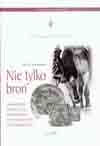Z czym wędrowano w zaświaty? O niemilitarnym wyposażeniu grobowym wojowników „wielbarskich”
What did they take with them on their last journey? On the non-military equipment in graves of the warriors of the Wielbark culture
Author(s): Kalina SkóraSubject(s): Archaeology
Published by: Łódzkie Towarzystwo Naukowe
Summary/Abstract: The specific character of the accessories of burial of the Wielbark culture, resulting from the selective depositing of the particular categories of objects in the graves, which excluded iron objects, tools and, utmostly important in our case – the armament, limits the probability of identification of the graves of the warriors on the basis of archaeological materials. The objects not prohibited by taboo, yet carrying evident military connotations are spurs, considered the only element of the warrior’s equipment observed in funeral practice. The analysed group numbers 99 graves, dated from phase B1 to D. In the Wielbark culture, the set of objects accompanying the warriors can be generally divided, with regard to their functions, into the following categories: elements of the dress; jewelry; toilet articles; tools; objects connected with custom; and amulets. The first group includes fibulae, buckles, belt-end fittings and belt plates, and pins. The pins were not used exclusively to fasten a cloak, but, among other functions, to fasten a shroud. The second category covers fi nger rings, bracelets and metal necklaces. Toilet articles, used by the warriors in grooming hair and beard, include combs, tweezers and shears. There are few tools. These are mainly knives and needles or awls, while shears appear as extremely rare finds, and in the warriors’ graves they are found miniaturised. An interesting category, connected with the graves with spurs, are articles belonging to the custom context, proving the owner’s high social position. These are imported bronze and glass vessels, gaming pieces, coins, drinking horns and wooden caskets. The wooden caskets are usually considered an attribute of women. Yet because of the presence of their remnants in the graves of the horsemen of Wielbark culture and in the deposits of militaria in the boggy sacrificial sites (for instance: Vimose) it cannot be excluded that the warrior’s equipment could have comprised such kind of containers for tiny objects (like toilet articles), useful during expeditions. The last category are the amulets. As such are considered glass or amber beads and spindle whorls, common in women’s graves. The function of a talisman could have also been performed by bucket-shaped and ball-like pendants, hazelnuts and fossils (shark’s teeth), accompanying the warriors of the Wielbark culture.
Journal: Acta Archaeologica Lodziensia
- Issue Year: 2008
- Issue No: 54
- Page Range: 7-26
- Page Count: 20
- Language: Polish

